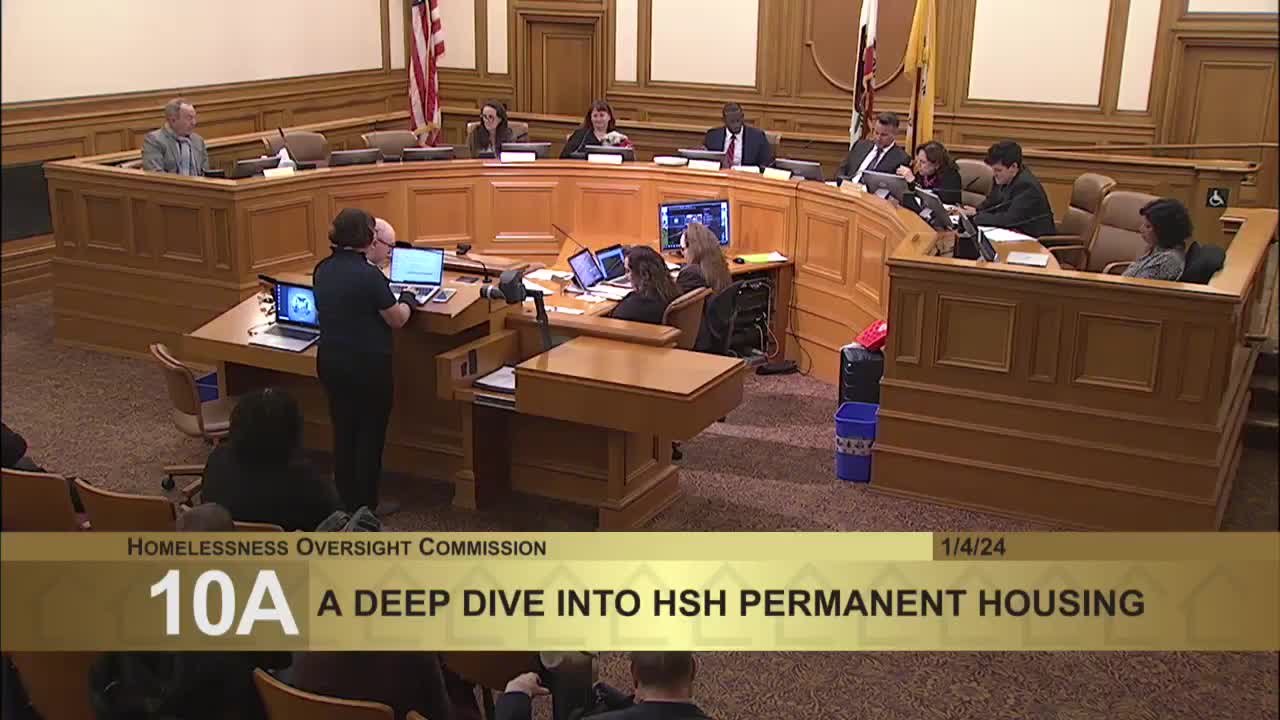Commissioner Guerrero discusses investment strategies for legacy housing and renovation issues
January 04, 2024 | San Francisco City, San Francisco County, California

This article was created by AI summarizing key points discussed. AI makes mistakes, so for full details and context, please refer to the video of the full meeting. Please report any errors so we can fix them. Report an error »

San Francisco's city officials are grappling with the future of aging residential buildings as discussions about funding and investment strategies took center stage in a recent government meeting. The dialogue highlighted the pressing need to address significant issues in some properties, including mold, plumbing failures, and elevator malfunctions, with estimates suggesting that repairs could cost upwards of $10 million for elevator upgrades alone.
Commissioner Guerrero raised concerns about whether continued investment in these deteriorating buildings is a wise use of city resources. The question posed was whether it might be more beneficial to redirect funds from poorly maintained properties owned by private entities to newer, more viable housing options that promise better living conditions for residents.
The meeting also showcased examples of successful housing projects, such as those managed by Episcopal Housing, which featured well-maintained outdoor spaces and no visible signs of neglect. This contrasted sharply with other properties that displayed significant external deterioration, underscoring the importance of not only managing the interiors of buildings but also enhancing their exteriors to foster community acceptance and integration.
City officials acknowledged the challenge of balancing investments in legacy buildings with the need to acquire new properties. The ongoing efforts to staff a real estate team aim to tackle these issues, focusing on utilizing funding from Homekey and Proposition C to secure newer buildings while avoiding the displacement of current residents.
As the city navigates these complex housing challenges, the emphasis remains on ensuring that investments lead to improved quality of life for all residents. The discussions signal a critical juncture for San Francisco's housing strategy, with officials committed to finding sustainable solutions that prioritize the well-being of the community.
Commissioner Guerrero raised concerns about whether continued investment in these deteriorating buildings is a wise use of city resources. The question posed was whether it might be more beneficial to redirect funds from poorly maintained properties owned by private entities to newer, more viable housing options that promise better living conditions for residents.
The meeting also showcased examples of successful housing projects, such as those managed by Episcopal Housing, which featured well-maintained outdoor spaces and no visible signs of neglect. This contrasted sharply with other properties that displayed significant external deterioration, underscoring the importance of not only managing the interiors of buildings but also enhancing their exteriors to foster community acceptance and integration.
City officials acknowledged the challenge of balancing investments in legacy buildings with the need to acquire new properties. The ongoing efforts to staff a real estate team aim to tackle these issues, focusing on utilizing funding from Homekey and Proposition C to secure newer buildings while avoiding the displacement of current residents.
As the city navigates these complex housing challenges, the emphasis remains on ensuring that investments lead to improved quality of life for all residents. The discussions signal a critical juncture for San Francisco's housing strategy, with officials committed to finding sustainable solutions that prioritize the well-being of the community.
View full meeting
This article is based on a recent meeting—watch the full video and explore the complete transcript for deeper insights into the discussion.
View full meeting
